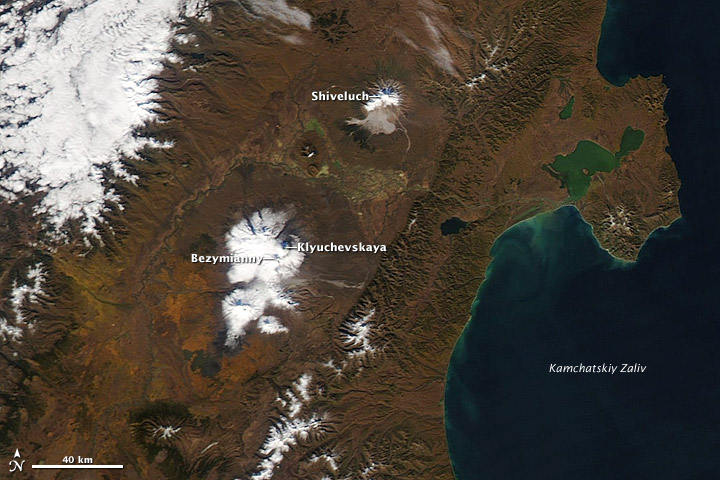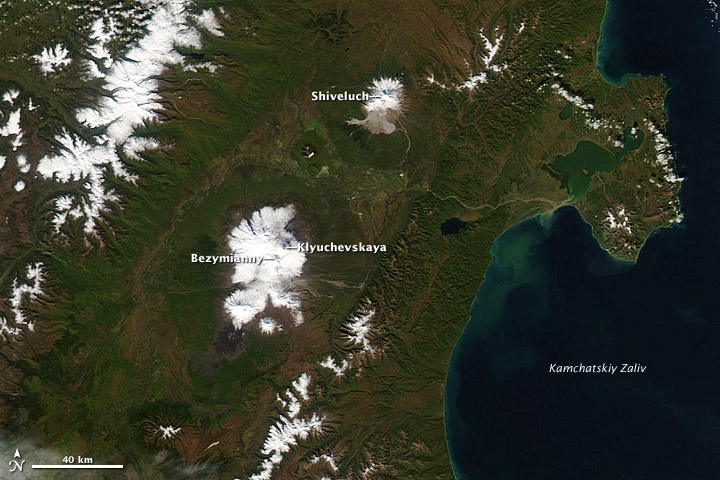
Satellites Watch Fall Come to Siberia

How quickly autumn can arrive.
Within the span of only 11 days, fall has swept through Siberia's taiga forests, changing leaves from green to brown, as seen in these images captured by NASA's Aqua satellite. The first one was taken on Sept. 20, and the second on Oct. 1.
The forests carpet the slopes and valleys between Bezymianny, Klyuchevskaya and Shiveluch, which are all active volcanoes on Russia's Kamchatka Peninsula. Common tree species in the area include Erman's birch, Japanese stone pine and Dahurian larch.
Autumn's colors come from pigments in leaves that are normally masked by chlorophyll, the green pigment that allows plants to harness the sun's energy during photosynthesis. The arrival of cooler temperatures and shorter days causes trees to begin shuttling nutrients to their roots for the winter, leading to the breakdown of chlorophyll and the unmasking of other leaf pigments.
The range and intensity of autumn colors is strongly affected by the weather. Both low temperatures and bright sunshine destroy chlorophyll. The brightest autumn colors occur when dry, sunny days are followed by cool, dry nights. While a slight drought can amplify bright fall foliage, too much of a drought can hurt the display. For that reason, leaf peepers in the United States can expect a spotty season for colorful fall foliage, due to drought gripping much of the country.


Reach Douglas Main at dmain@techmedianetwork.com. Follow him on Twitter @Douglas_Main. Follow OurAmazingPlanet on Twitter @OAPlanet. We're also on Facebook and Google+.
Sign up for the Live Science daily newsletter now
Get the world’s most fascinating discoveries delivered straight to your inbox.










